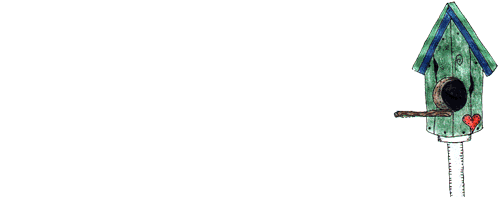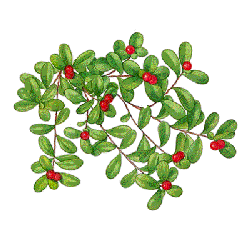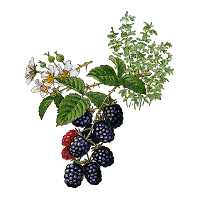

 There
is a variety of other plants that you can either plant or allow to grow
in your yard that will attract birds. There are types of groundcovers,
grasses, brambles, and even weeds that will draw birds to your yard like
magnets. Sparrows, meadowlarks, wrens, vireos, chickadees, finches, buntings
juncos, and blackbirds all love seed from various ornamental grasses.
And many birds will nest in the ormanmental grasses, brambles, and groundcovers.
There
is a variety of other plants that you can either plant or allow to grow
in your yard that will attract birds. There are types of groundcovers,
grasses, brambles, and even weeds that will draw birds to your yard like
magnets. Sparrows, meadowlarks, wrens, vireos, chickadees, finches, buntings
juncos, and blackbirds all love seed from various ornamental grasses.
And many birds will nest in the ormanmental grasses, brambles, and groundcovers.
|
|
|
|
|
(Andropogon gerardii) |
Clumps that grow 4' to 7' tall with narrow foliage that emerges silvery blue in spring and turns bronze in the winter. | Plant in full sun in well drained soil. Tolerates heat, humidity and draught. Zones 4 to 10. Birs will eat the seeds and nest in the clumps of foliage. |
|
(Typha latifolia) |
Coarse blades that grow 6' to 10' tall, with equally tall stems topped by cigar-shaped brown seedheads. | Plant at water's edge or in water up to 12" deep, in full sun or part shade. Spreads rapidly. Zones 3 to 10. Birds will eat the seeds and nest in the foliage. |
|
(Panicum clandestinum) |
Low-growing clumps of bambo-like foliage with delicate sprays of seedheads. | Plant in moist, humusy soil in the shade. Zones 4 to 9. Birds will eat the seeds. |
|
(Sorghastrum nutans) |
2' to 3' tall clumps of grass with feathery wands of flowers rising 2' to 3' above the folieage. | Plant in sun to part shade. Tolerates drought, clay soil, wet soil, or dry soil. Zones 4 to 9 Birds will eat the seeds. |
|
(Orysopsis nutans) |
1' to 2' tufts of narrow, delicate foliage with tall flower stems topped with delicate seedheads. | Plant in full sun in well drained soil. Zones 8 to 10. Birds will eat the seeds. |
|
(Schizchyrium scoparium) |
Upright clumps that grow 2' to 5' tall. Flower-topped stems that turn into fuffy plumed seedheads. | Plant in full sun, won't tolerate wet soils. Zones 3 to 10. Birds will eat the seeds and nest against the clumps. |
|
(Tridens flavus) |
Low clumps of spiky foliage that grow 1' or taller, with taller stems of drooping red-purple flowers. | Plant in full sun to shade. Self-sows. Zones 5 to 9 Birds will eat the seeds, and old foliage is popular nesting material. |
|
(Panicum vigratum) |
Clumps of spiky foliage that produce clouds of delicate flowers and seedheads. | Plant in full sun. Grows well in most soils. Self-sows.
Zones 5 to 9.
Birds eat the seeds and foliage is used as nesting material. |

|
|
|
|
|
(Arctostaphylos uva-ursi) |
A low evergreen shrub with trailing branches. Grows 6 to 12 inches tall. The shiny dark green leaves are 1 inch long and in fall turn bronze-red. Clusters of tiny bell-shaped white or pink flowers, 1/4 inch long, tip the branches in spring; they are followed in the fall by long-lasting red berries that remain well into winter. | Spreads by taking root where branches touch the soil, forming new shoots that eventually may blanket an area up to 15 feet wide. This hardy plant can withstand wind, severe drought, cold and polluted air. Bearberry grows in Zones 2-7 in full sun or partial shade. It does best in a well-drained sandy or gravelly soil |
|
(Juniper spp.) |
Junipers range in size from creeping ground covers to 90-foot tall
columnar trees. The columnar types grow so slowly that it is seldom necessary
to prune them to
hold their dimensions in check. Juniper's foliage stays on the plant year round but may change from green to bronze, purple or brown in winter. Female plants bear ornamental gray-blue berries in fall and winter. |
Nothing seems to discourage the tough, handsome junipers. They grow in almost every climate zone in the United States and Canada, and in any soil-rocky or sandy, acid or alkaline. To be sure of getting berries, buy junipers when the plant is in fruit and be sure to plant a male juniper nearby. Junipers are excellent specimen trees and are often used for windbreaks. |
|
(Vaccinium vitis-idaeas var. minus) |
Creeping shrub with pink urn-shaped flowers, small oval leaves, and read berries. | Grow in full sun, in well drained, moist acid soil high in organic matter. Hardy to Zone 2 to 5. Hummingbirds will be attracted to the flowers. |
|
(Opunita spp.) |
A cactus that can be as big around as a dinner plate. They have yellow flowers and egg-shaped red or yellow fruits. | Grow in full sun and in infertile well drained soil. Zones 6 to 9. Cactus wrens, mourning doves, curve-billed thrashers, road runners, and sparrows will use for shelter, and many birds will eat the fruits. |
|
(Amelanchier stolonifera) |
Dense thickets of erect stems about 4' tall, with white flowers and a dark purple berry. | Grows in either sun or shade. Zones 4 to 9. Berries are a favorite of birds, and the dense thicket provides an excellant cover for the birds. |
|
(Fragaria virginiana and f. chiloensis) |
Like its cultivated cousin, the Virginia strawberry is a low-growing
perennial that spreads by sending out slender aboveground runners bearing
miniature new plants. Strawberry plants bear oval
serrated leaves divided into groups of three leaflets.The golden-centered, five-petaled white flowers, about 1/2 to 3/4 inch across, grow on separate short stalks and blossom in spring in delicate clusters. The fruit is smaller and more conical than that of cultivated strawberries. |
Virginia strawberries grow among grasses in open, sunny fields in Deciduous Woodland and Prairie environments. They do best in a well-drained humus-filled soil. Virginia strawberries are of the easiest possible culture and yield delectable fruit. Zones 4 to 9. A wide variety of birds love the fruits. |

|
|
|
|
|
(Rubus spp.) |
Individual blackberries are 1 to 2 inches long and are composed
of many united segments, each of which carries a small seed. Some plants
are stiffly erect bushes growing 4 to 5 feet tall, while others are trailing
vines that must be tied to a support
to keep the fruit off the ground. Both types are alike, however, in that their canes grow one year, then bear fruit and die the second year. Each summer new canes are produced; these will bear fruit the following year. Nearly all blackberries are notorious for their thorny canes, although a few thornless varieties exist; they are much easier to work among, but generally bear small crops. |
Blackberries grow best in a moist but well-drained soil that has
been supplemented with compost or manure. From Zone 5 north, plant
blackberries in the early spring as soon as the ground can be worked;
from Zone 6 south, set the plants out in the fall, winter or spring. Fruits attract birds. |
|
(Rubus spp.) |
They grow on erect shrubs that bear loose clusters of white flowers
in early summer; the flowers are followed immediately by the fruit. Black
raspberries, often called blackcaps, and purple raspberries, which are
hybrids between red and black varieties, have quite a different flavor
from that of red raspberries. Yellow raspberries are
mutations of red varieties and are like them except for color. |
Raspberries grow best in well-drained soil that has been supplemented
with compost or manure. Buy one-year-old certified
disease- and virus-free plants. Raspberries should never be planted where eggplants, peppers, potatoes or tomatoes have grown within three years, because they are susceptible to soil-borne diseases associated with such plants. Zones 4 to 8, depending on variety. Birds love the fruit. |
|
(Rubus phoenicolasius) |
Fuzzy red canes that bear tangyu-sweet red fruits. The canes are prickly to the touch, but beautiful to look at in the garden in winter. | Grow in moist soils and partial shade. Looks good when grown next to ornamental grasses. |
|
(Rubus parviflorus) |
Nearly thornless stems that grow to 5', with fuzzy maple like leaves. They have a juiceless berry. | Hardy to Zone 3. |
|
(Rubus spectablilis) |
Produces deep pink flowers and fuzzy orange berries. | Hardy to Zone 7. |
| Feeding the birds | Providing Water for the Birds |
| Providing Housing for the Birds | Back to the Main Page |
| Other Methods to Attract Birds | Providing Safety for Birdse |